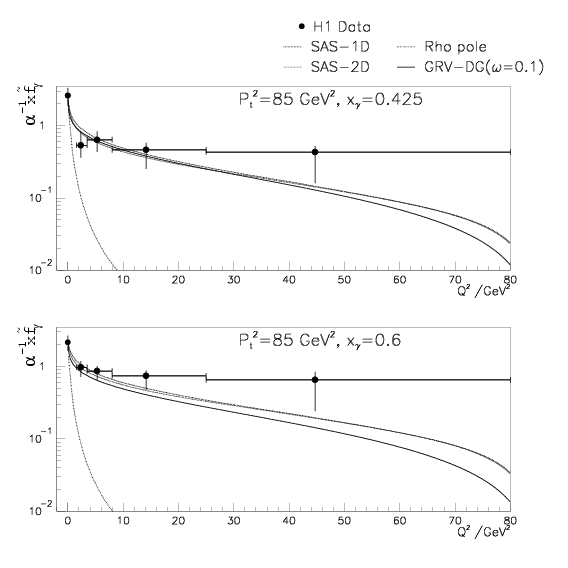Structure of Quasi-Real Photons (Q2 ~ 0)
- The quark-gluon structure of the photon gives information on the
creation of hadronic matter. At HERA photons accompany the lepton beam.
Such photons can fluctuate
into a quark-antiquark state which may or may not develop a hadronic
bound state, for example a rho meson. For quasi real photons at HERA the
fluctuation time for a quark-antiquark pair corresponds to about 10000
fm in the rest frame of the proton. This quark-antiquark state can be analysed
in scattering processes with the partons of the proton which can be observed
for example in 2-jet events.
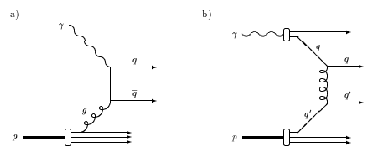 |
Processes in which the photon interacts directly with a parton of the proton are called direct photon-proton processes. Resolved photon-proton scattering involves processes where the photon interacts indirectly via its own partons. |
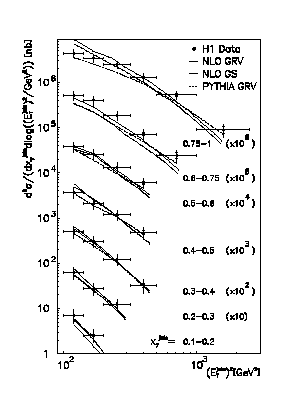 |
The figure shows the double differential 2-jet cross section as function of the two observables that are relevant for the parton distributions of the photon: the momentum of the parton from the photon x and the transverse energy of the jets ET. The latter observable is directly related to the resolution scale of the process. |
x fgamma = x ( fq/gamma + 9/4 fg/gamma )
|
|
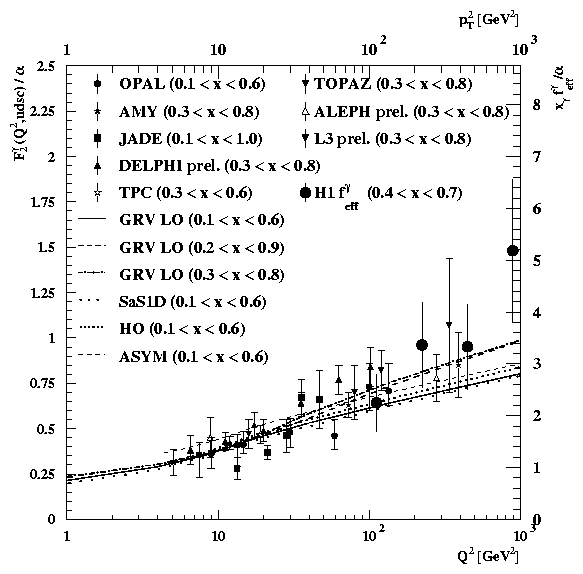 |
The figure shows measurements of the photon structure function as a function of the virtuality Q2 of the exchanged photon as obtained at electron-positron colliders (left and lower scale). In good agreement with these data is the effective parton distribution of the photon as extracted from the H1 jet measurement. This is shown as a function of the scattered parton squared transverse momentum pt2 which was determined from the jet transverse energy (right and upper scale). |
|
|
 |
The figure shows the 2-jet cross section as a function of the parton momentum x from the photon side. The histograms show the contributions of the direct photon-proton processes and the processes that were induced by a quark from the photon side. The difference between the measured jet cross section and these two histograms shows the gluon contribution of the photon. |
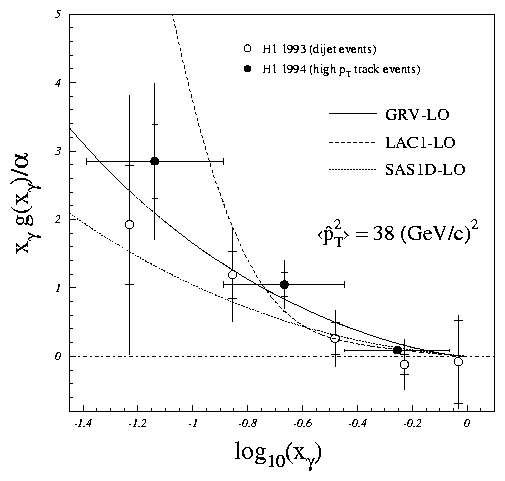 |
The first measurement of the gluon distribution of the photon was determined in leading order QCD using a previous measurement of the 2-jet cross section (open symbols). The same method of extraction was later used for particle cross section measurements (closed symbols). At large x the gluon density in the photon is small. It does not rise steeply towards small values of x. |

